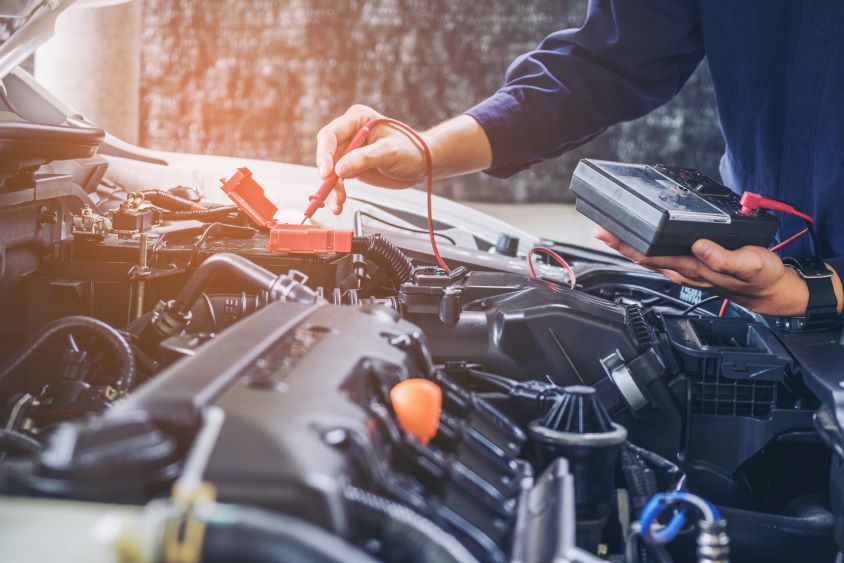How to check your car’s battery
Written by: Simon Pavey, Last updated:14th February 2023

Your car is a finely-tuned machine that needs all of its components to be in good working order to allow it to function efficiently and correctly. One element that all car users should therefore check regularly is the vehicle’s battery.
Failure to do so can lead to major headaches for drivers, so understanding how to carry out effective checks on your battery’s condition should be something every driver knows how to do.
How do you check the health of your battery?
A healthy battery should hold a charge of no less than 12.6 volts and this can easily be checked by opening the bonnet of the vehicle, disconnecting the battery and affixing a multimeter to the positive (+) and negative (-) terminals. If at any point you’re getting a negative reading, you have the multimeter attached the wrong way around.
Measure the DC voltage of the battery using the device and be sure to only do so once the car has been at rest for a significant amount of time – normally overnight. This is known as the ‘resting charge’.
Testing the battery when the vehicle has recently been driven may provide a false reading, as the car’s alternator will have recently charged it. Batteries are designed to hold their charge for a considerable length of time in order to power the starter motor when needed and to ensure electrical equipment will function correctly at all times.
When testing the voltage, ensure that no metallic items are touching the terminals of the battery, as this can cause a dangerous discharge.
The resting voltage recorded on your multimeter should be no less than 12.6 volts to show the battery is in proper condition. Bear in mind that a resting charge of less than 12.2 volts would highlight a serious problem with the battery.
Why is the battery so important?
Your vehicle’s battery powers all the electrical components of your car – everything from your headlights and indicators to your in-car heating and power steering. As a result, ensuring the battery is in proper working order and holding its charge is imperative.
According to the RAC, battery faults are the number one cause of breakdowns in the UK each year. Motorists up and down the country should therefore take note of the importance of proper battery maintenance.
Signs that your battery may need to be replaced include dim headlights or headlights that are dimmer when the vehicle is at rest, difficulty turning over the starter motor and a change in sound when the vehicle is idling.
Some of the main causes of battery failure include age (batteries should ideally be replaced every five years), corrosion of the terminals, extreme hot or cold temperatures, loose cables or wiring, improperly installed electrical components, and frequent short trips that do not provide sufficient time for the battery to charge fully.
If you notice any of these warning signs, it’s important to have your battery checked.
At MyService.Expert we offer access to a nationwide network of garages where you can get expert maintenance on every aspect of your vehicle.
What’s more, when you sign up to our service, this entitles you to discounts on all parts and labour of up to 25 per cent.
back


